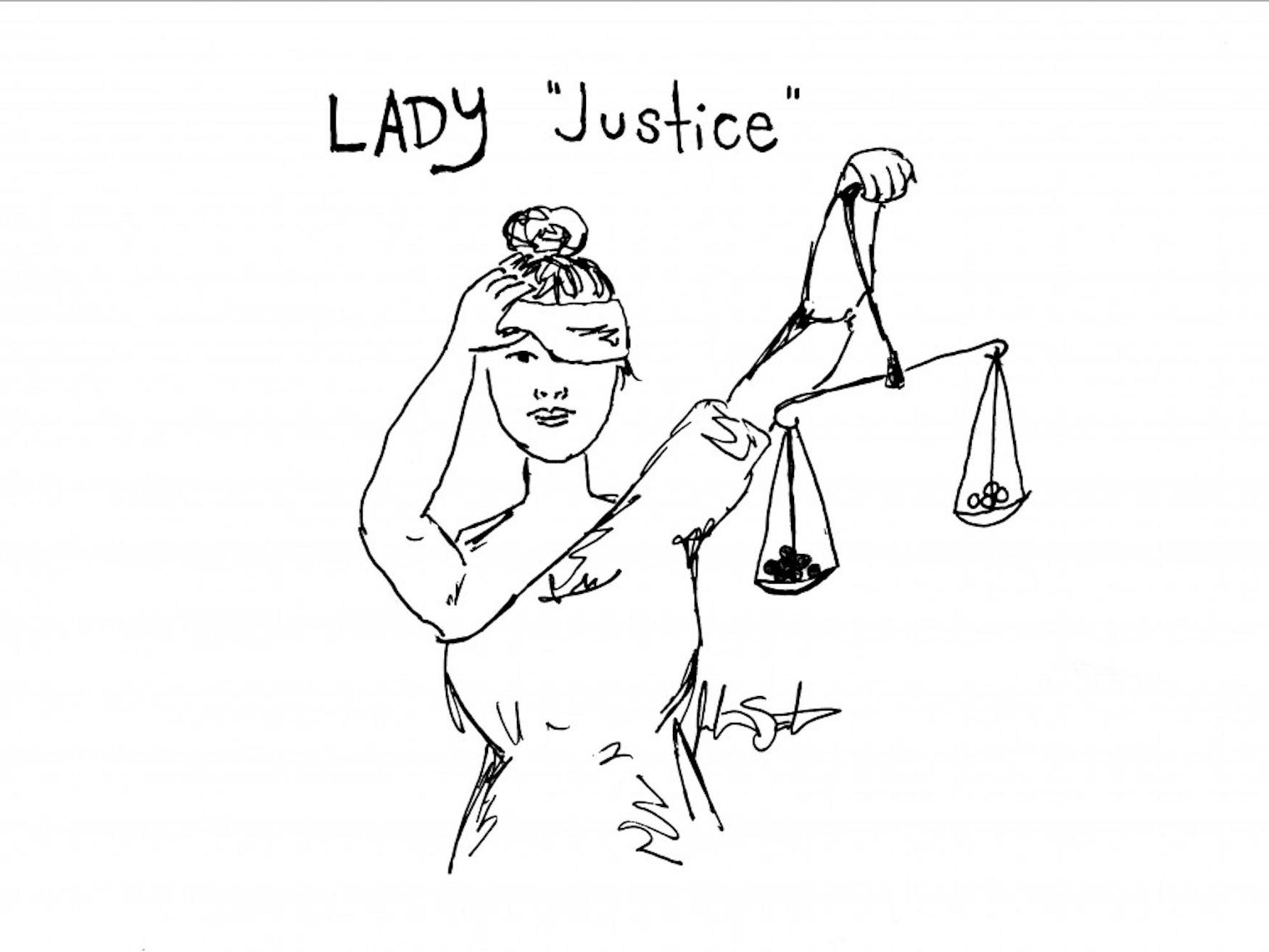Urge reform in sentencing severity for drug possession
Last summer, I worked as an Intern Investigator for the Public Defender Service for the District of Columbia, where I helped represent adults and youth caught up in the criminal justice system. One thing that struck me was the number of our clients that were charged with drug offenses, convicted and then sentenced to astonishing time periods in jail.
Most were from “across the river,” the district’s euphemism for Wards 7 and 8, where income and high school graduation rates are both drastically lower than in other parts of the city. As a side note, D.C. is a sharply segregated city, both by race and class. Even today, driving less than a mile can take you from a neighborhood that is 80 percent white to one that is 80 percent Black, as shown in a 2015 Brookings report.
“Across the river” also happens to graciously host the district’s jail, where I spent much of my time interviewing clients, generally indigent D.C. residents accused of crimes. While some were charged with violent crimes — aggravated assault, sexual assault and murder, for instance — many were charged for non-violent offenses, often involving drugs. This fact is also reflected nationally: The Federal Bureau of Prisons most recently reported that 46.3 percent of all prison inmates are incarcerated for drug offenses, a startling number.
Even more startling is the sheer number of inmates currently incarcerated: 2.2 million, which is the highest number of people incarcerated in any single country in the world. According to a Feb. 28, 2008 New York Times article, this is more than one in every 100 adults. That’s right: We have just under five percent of the world’s population and yet almost a quarter of the world’s prison population, according to data from the U.S. census and the World Prison Population List.
Politicians and activists across the political spectrum have come to designate this “mass incarceration” as a grave civil rights issue. In her 2010 book “The New Jim Crow,” Michelle Alexander argues that the problem arose with Nixon’s “War on Drugs” in the 1970s, a time when domestic and street crime rates were at all-time highs. Under pressure to maintain public safety, federal and state legislatures imposed “mandatory-minimum sentencing,” an effort to reduce individual judges’ discretion in imposing sentences, she writes. These mandatory minimums and other factors — such as increased policing — drove prison rates to skyrocket. In fact, from 1975 to 2015 the U.S. prison and jail population increased by 500 percent, according to a report by the Sentencing Project.
These increased mandatory minimums have driven more and more cases to end in plea bargaining instead of trial. In fact, according to a Dec. 5, 2013 article by Human Rights Watch, 97 percent of federal drug offenders plead guilty. The article cites that this is due to their choice of either pleading and receiving 10 years in prison, or risking parole by going to jail. Oftentimes poorly represented by public defenders, people charged with drug crimes often cannot reasonably take on the risk of going to trial.
As the title of Alexander’s book implies, she also maintains that mass incarceration is an extension of slavery and Jim Crow. As the political attitudes toward the oppression of Black people evolved, she argues, the “system” designed to keep white people in a position of power changed accordingly. When slavery became no longer acceptable, Jim Crow took its place. When Jim Crow was no longer acceptable, mass incarceration took its place. It is within this narrative of white-on-Black oppression that Alexander contextualizes mass incarceration today.
According to a report from the Sentencing Project, this disparity in our state’s prisons is no joke; African-Americans are incarcerated at 5.1 times the rate of white people. However, fully attributing this number to racism neglects other important contributing factors.
For one, in his new book “Locking Up Our Own,” Yale Law School professor James Foreman Jr. disputes this claim. Foreman Jr. worked as an attorney at the Public Defender Service in the 1990s. He opens his book with an anecdote about a time he noticed that all the government officials involved in a particular case — from the prosecution, to the judge and bailiff — were African-American. Why? One reason, he points out, is because a vast majority of African-American leaders and community members supported tough-on-crime approaches from the 1970s through the 1990s. Many of the inner cities were replete with crime, and with the crack epidemic surging the issue only became worse.
Similarly, Eric Holder, then United States Attorney for Washington D.C., channeled his residents’ desire for safety on Martin Luther King Jr.’s birthday in 1995 when he introduced “Operation Ceasefire,” which gave police officers greater leeway to stop cars and search them for guns. Holder argued that the responsibility for rampant crime lies primarily within the African-American community itself. “Young Black males make up one percent of the national population but account for 18 percent of the nation’s homicides,” he once said, and African-Americans have the right to be safe.
A proper approach to reforming our prisons and jails would rely on appropriately attributing responsibility. There’s no doubt that our criminal justice system needs reforming, and I think a good place to start would be lowering sentences for low-level drug offenses and crimes that are non-violent. Whether jail actually deters people from smoking a joint is up for debate, but with the decriminalization of marijuana in many states we are already moving in this direction. Perhaps for certain drug crimes rehabilitation is a better option than jail, and this is something we must consider.
The bottom line is that we need to renew the conversation of what jail is and what we, as a society, use it for. Our approach must not be grounded in the whim of political tides but rather in hard data.



Please note All comments are eligible for publication in The Justice.